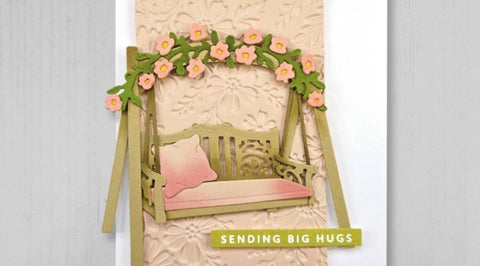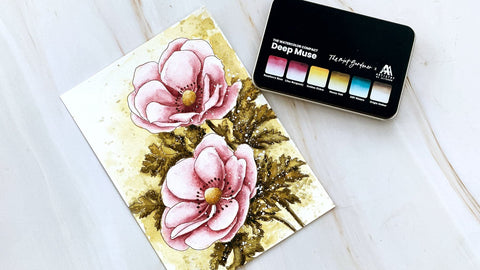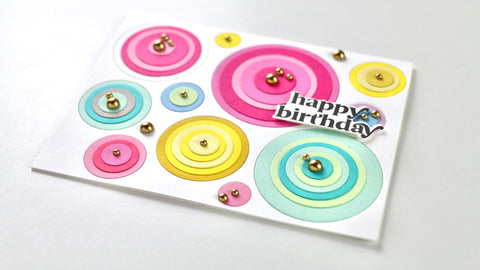Layering Dies 101: Overcoming Common Struggles with Dies
Last Updated: October 29, 2025
Have you ever found yourself wrestling with layering dies, only to end up with a project that looks more like a puzzle gone wrong than a beautiful handmade card? You’re not alone!

Layering dies can be a game-changer, especially for beginner crafters, since they add depth and dimension to your projects with just a few intricate die-cuts. But let’s be real—sometimes they can leave you frustrated and wondering if it’s all worth it.
 In this Layering Dies 101 guide, we’ll tackle those common struggles that can turn your crafting joy into a headache. Have you ever dealt with misaligned layers or cutting mishaps that left you questioning your skills? Don’t worry; we’ve all been there! We’ll share practical solutions to help you navigate these challenges and create stunning 3D projects with layering dies easily.
In this Layering Dies 101 guide, we’ll tackle those common struggles that can turn your crafting joy into a headache. Have you ever dealt with misaligned layers or cutting mishaps that left you questioning your skills? Don’t worry; we’ve all been there! We’ll share practical solutions to help you navigate these challenges and create stunning 3D projects with layering dies easily.
Understanding Layering Dies
If you’ve been cardmaking or paper crafting for a while, you’ve probably used or heard of dies. But what are layering dies?
A layering die is a type of crafting die that includes multiple "layers." These layers need to be adhered together to create a beautiful 3D layered look. Some layering dies would have up to 10 layers, while others would have 3 to 5 layers. This type of die is definitely a game-changer in the world of paper crafting.

Why use layering dies in card making?
Floral layering dies are very popular in the cardmaking world because they are beginner-friendly, easy to use, and produce beautiful, realistic paper flowers. You can layer these on your handmade card, pop up a sentiment, and you’re good to go! Each layering die can also be cut out of colored cardstock, so you don’t need to worry about adding colors.
If you’re not into florals, don’t worry! There are various layering die designs out there. Here are some of our fan favorite non-floral layering dies.
- Layered Plaid Cover Die Bundle
- Modern Fireplace Layering Die Set
- Leaf Mix Die Set
- Tree Mix Die Set
- Zero-Waste 3D Floral Cover Die
- Globe Builder Die Set
- Chestnut Tree Layering Die Set
- Bird of the Mountain Die Set
- Far Out Phrases Die Set
- Layered Snowflakes 2 Die Set
- Delicate Dragonflies

Altenew's Cardinal Love Layering Die Set
The two meticulously designed male and female cardinals in this layering die set include multiple layers for stunning depth and embossed lines that deliver a lifelike texture, making these birds truly pop in your projects. A two-layered branch is also included, providing the perfect perch for your cardinal masterpieces. There are 21 dies in this set.
Expert Tips!
▪ Use the cardinals in this set with the Rose Garden Birdhouse Set or other branch dies in your stash.
▪ While these cardinals are different from the ones in our Winter Cardinal Stamp Set, you can use them together in any of your projects.
Did you know? Male cardinals are known for their striking red feathers, which make them easily recognizable. Females, on the other hand, have a more subdued brownish color with red accents.

Common Issues with Layering Dies
1. Misalignment of Layers
This is one of the most frustrating issues crafters face when working with layering dies. This often occurs when the dies shift during the cutting process or when layers are not positioned correctly before adhering. Even slight misalignments can lead to noticeable gaps or overlaps and may give your projects a wonky or incomplete look.

2. Difficulty in Cutting
Difficulty in cutting might stem from incorrect machine settings, poor-quality dies, or the wrong type of material. If your die-cutting machine isn’t calibrated correctly, it may not apply enough pressure, leading to incomplete cuts. There’s nothing more frustrating than getting signs of inadequate cutting like torn edges, incomplete shapes, or difficulty releasing the die.

3. Inconsistent Layering Effects
Inconsistent layering effects can occur when different materials are used, each with its own thickness and texture. For instance, if you use heavy cardstock for one layer and lightweight vellum, the layers may not sit flush against each other. Additionally, materials with varying textures can affect the depth and visual appeal of your project, making it look unbalanced or chaotic.

4. Adhesive Problems
Choosing the right adhesive for layered projects can be a challenge, as different materials require different types of glue for excellent results. One of the most common mistakes, especially for beginners is using too much adhesive, which can seep out and create a messy appearance. Another mistake is selecting a glue that doesn’t provide enough hold, which causes layers to peel apart over time.
It’s essential to consider the specific needs of your project and select adhesives designed for the materials you’re using. Take time to apply adhesive carefully and in the right amounts to ensure your layers stay securely in place.
Fun Fact: Cardinals are songbirds and are known for their beautiful and varied songs. Males are particularly vocal during the breeding season.


Tips for Perfect Alignment
- One effective technique is to use a light source or a lightbox, which allows you to see through the layers and helps you position them accurately before committing to adhesive.
- Additionally, consider using low-tack tape to hold layers in place temporarily as you align them, ensuring they don’t shift while you work.
- Tools like a precision alignment tool or a magnetic platform can also make a world of difference, providing a stable base and guiding your dies into the perfect position.
- Don’t forget to take your time—patience is key!
With these tips and tools in your crafting arsenal, you’ll be well on your way to achieving flawless layering every time.

Did you know? Cardinals are often seen as symbols of hope and renewal, and many people believe that seeing a cardinal is a sign from a loved one who has passed away.
Additional Tips for Successful Layering Die Projects
- Practice, practice, practice! Just like with any other hobby or skill, practice is important to build confidence. Our Craft-A-Flower Layering Dies are perfect for beginners because they feature Altenew’s innovative Key-Hole System.
Our Key-Hole System features cleverly designed shapes, including a keyhole, an arrow, and an isosceles triangle, with the potential for additional shapes in the future. These shapes serve as foolproof guides for super-easy layering. Simply line up the small die-cut shapes, and you're good to go! They also make it a breeze for you to identify which die-cuts belong together. For instance, in a set with two layering images, all layers for one image will feature the keyhole cutout, while the other image's layers will display the arrow cutout. You'll always know the correct orientation because these cutouts align in only one way.
With Altenew's Key-Hole System, achieving impeccable layering has never been easier or more foolproof. Say goodbye to guesswork and hello to stunning, perfectly layered designs every time you craft!

- Keep on experimenting. As a cardmaker, it’s crucial to try new things and experiment with various techniques. If layering dies don’t work out the first time, maybe try other types of dies. Better yet, watch video tutorials on how to use layering dies and practice as you watch. You can also sign up for free online classes about layering dies to learn more techniques and tips.
- Share your projects and seek community support. The cardmaking community is filled with incredibly warm and supportive people just like you. Don’t worry about what they would say (which are probably nothing but encouraging words)—just share your handmade creations featuring layering dies. Who knows? You may even find a new crafty friend or two or learn more die-cutting tips and tricks from expert cardmakers. Start by joining exclusive cardmaking Facebook groups like Altenew’s Facebook Fan Group.

Say Goodbye to Layering Die Frustrations!
There you have it—your ultimate guide to overcoming the common struggles of layering dies! With a little patience and the right techniques, you can transform those pesky challenges into stepping stones for crafting success. Remember, every crafter has faced their fair share of misalignments and cutting mishaps, so you’re in great company! Embrace the learning process, and don’t hesitate to experiment with your favorite die sets, like our new Cardinal Love Layering Die Set. *wink wink*
Now it’s time to put your newfound knowledge to the test—happy crafting, and may your layers always align perfectly! If you have any tips or experiences to share, we’d love to hear them in the comments below. Visit us In the Craft Room for more dies and die-cutting tips and techniques.
















